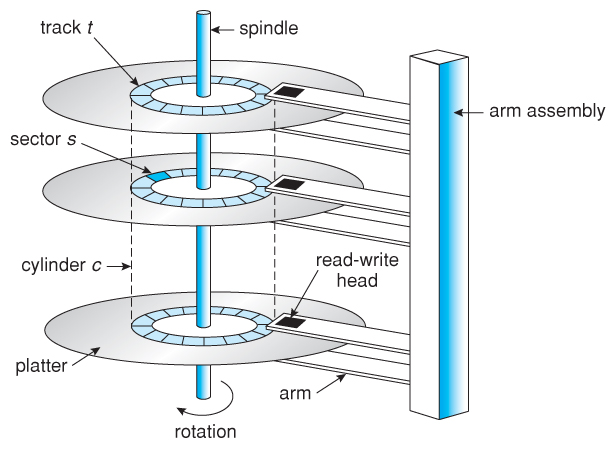
Magnetic Disks
In modern computers, most of the secondary storage is in the form of magnetic disks.The basic structure of magnetic disk is depicted as beside:

In modern computers, most of the secondary storage is in the form of magnetic disks.The basic structure of magnetic disk is depicted as beside:
As we know, a process needs two type of time, CPU time and IO time. For I/O, it requests the Operating system to access the disk.
However, the operating system must be fare enough to satisfy each request and at the same time, operating system
must maintain the efficiency and speed of process execution.
So, Disk Scheduling can be defined as the techinique that operating system uses to schedule I/O requests arriving for the disk.



Seek time is the time taken to locate the disk arm to a specified track where the data is to be read or write.

Rotational Latency is the time taken by the desired sector of disk to rotate into a position so that it can access the read/write heads.

Transfer time is the time to transfer the data. It depends on the rotating speed of the disk and number of bytes to be transferred.

Disk Access Time = Seek Time + Rotational Latency + Transfer Time

Response Time is the average of time spent by a request waiting to perform its I/O operation
The list of various disks scheduling algorithm is given below. Each algorithm is carrying some advantages and disadvantages.
The limitation of each algorithm leads to the evolution of a new algorithm.
